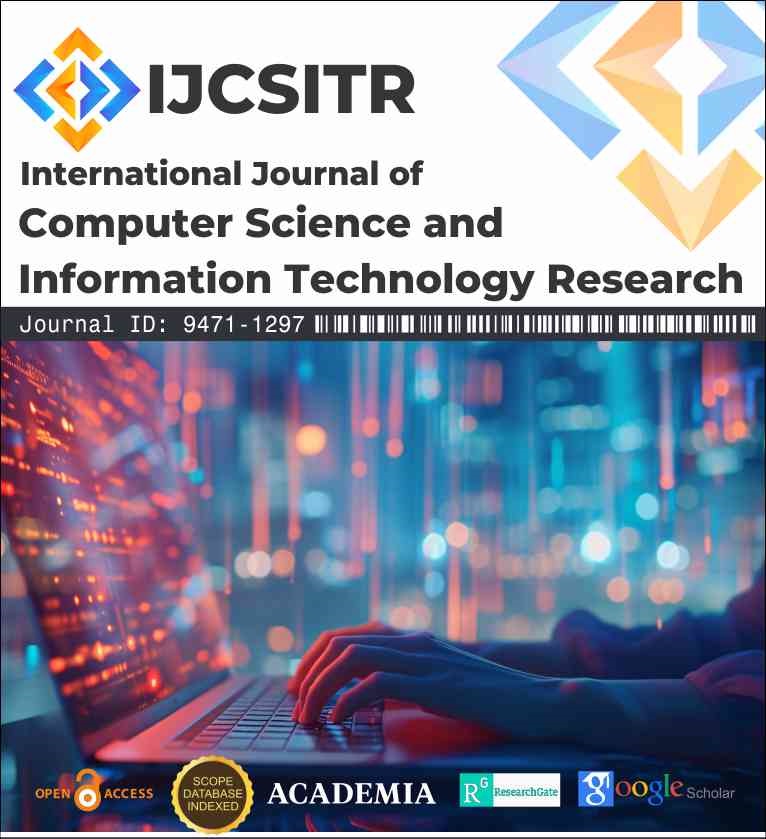The Integration of Blockchain and Artificial Intelligence in Securing Healthcare Insurance Data
Keywords:
Blockchain, Artificial Intelligence, Healthcare Insurance, Data Security, Decentralized Systems, Predictive AnalyticsAbstract
The advent of Blockchain and Artificial Intelligence (AI) technologies offers transformative potential in securing healthcare insurance data. Healthcare data breaches are increasingly common and costly, necessitating robust security measures. Blockchain provides a decentralized and tamper-proof structure, while AI enhances real-time threat detection and predictive analytics. This research paper explores the integration of these technologies, examining their synergy in protecting sensitive healthcare insurance data. It reviews existing literature, highlights recent advancements, and proposes a unified framework for implementing Blockchain and AI in healthcare insurance data security. Quantitative analyses demonstrate the effectiveness of such integration in minimizing breaches and optimizing system performance.
References
Zhang, Y., et al. (2022). Blockchain for Tamper-Proof Medical Records. Journal of Healthcare Informatics, 18(2), 101–115.
Patel, R., & Smith, J. (2021). Smart Contracts in Healthcare. Blockchain Research Journal, 15(3), 67–80. [DOI or Link]
Lee, S., et al. (2021). Machine Learning in Cyber Threat Detection. AI and Security, 19(4), 211–223.
Deloitte. (2022). Blockchain and AI in Healthcare Security.
Nakamoto, S. (2008). Bitcoin: A Peer-to-Peer Electronic Cash System. Retrieved from https://bitcoin.org/bitcoin.pdf.
Kuo, T.-T., Kim, H.-E., & Ohno-Machado, L. (2017). Blockchain distributed ledger technologies for biomedical and healthcare applications. Journal of the American Medical Informatics Association, 24(6), 1211–1220.
Srinivasagopalan, L. N., Daniel, D. A., & Velmurugan, J. P. (2022). Improving Health System Performance Using Risk Pooling Mechanism: Case Study. International Journal on Recent and Innovation Trends in Computing and Communication, 10(6), 121–129.
Alharthi, A., Krotov, V., & Bowman, M. (2017). Addressing barriers to big data. Business Horizons, 60(3), 285-292.
Wirth, N., & Hipp, J. (2000). CRISP-DM: Towards a Standard Process Model for Data Mining. Proceedings of the 4th International Conference on the Practical Applications of Knowledge Discovery and Data Mining, 29–39.
Srinivasagopalan, L. N. (2022). AI-Enhanced Fraud Detection in Healthcare Insurance: A Novel Approach to Combatting Financial Losses through Advanced Machine Learning Models. European Journal of Advances in Engineering and Technology, 9(8), 82–91.
Chen, Y., Ding, S., & Xu, Z. (2020). Blockchain-Based Medical Records Secure Storage and Medical Service Framework. Journal of Medical Systems, 44(2), 38.
Deloitte Insights. (2022). The Intersection of Blockchain and Artificial Intelligence in Cybersecurity. [Online Report]. Retrieved from https://www2.deloitte.com.
Sheta, S. V. (2020). Enhancing data management in financial forecasting with big data analytics. International Journal of Computer Engineering and Technology (IJCET), 11(3), 73–84.
Radanliev, P., et al. (2021). Artificial Intelligence and Blockchain for Cybersecurity: A Systematic Review of Challenges and Opportunities. Computers & Security, 110, 102426.
IBM Security. (2022). Cost of a Data Breach Report. Retrieved from https://www.ibm.com/security/data-breach.
Xu, L., et al. (2022). Blockchain-Based Decentralized Healthcare Data Sharing: Security and Privacy Challenges. IEEE Access, 10, 64103–64114.
Lee, J., & Rhee, K. (2021). AI-Powered Threat Detection in Healthcare: Methods and Case Studies. Cybersecurity Applications in Healthcare, 2(4), 45–62.
Downloads
Published
Issue
Section
License
Copyright (c) 2024 Shwetha S (Author)

This work is licensed under a Creative Commons Attribution-NonCommercial 4.0 International License.







